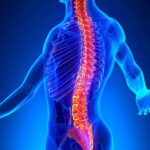How Do Various Biodecoding Schools Differ?
There are several biodecoding schools, each with its own curriculum. Given the absence of a standardized teaching code, these curricula differ substantially. They range from pledges to teach you to “decode” in mere days to structured programs paralleling university-level studies. Before enrolling in any course, one should meticulously research the curriculum, the teaching team, and the program’s caliber.
Key Differences Between Biodecoding and Somatization
Somatization posits that when we undergo stress, it physically manifests in our bodies through diverse symptoms. Conversely, Biological Decoding delves deeper, pinpointing the precise conflict that triggered such symptoms. It aims to unearth the underlying conflict rather than merely addressing the symptom.
Various Terminologies of Biological Decoding
Biological Decoding is known by several terms, all equally valid. It is rooted in the theory of New Germanic Medicine, postulated by Dr. Hamer. This German physician drew a link between a physical symptom and an emotional conflict, outlining the five biological laws that dictate this relationship. Although there are distinct names and therapeutic approaches in biodecoding, they all stem from this core theory.
Decoding Process in Children and Adolescents
Biodecoding is flexible and varies according to a child’s age.
- For infants aged 0 to 3, the primary intervention is with the parents.
- With children between 3 and 6 years old, techniques such as drawing and storytelling are introduced. Although parents remain involved, the child begins to play a more active role in the process.
- For those between 6 and 12 years, creative methods are employed, including drawing, storytelling, journaling, clay modeling, and other mediums. Although parents continue to be engaged, their involvement becomes less direct.
- From age 12 onwards, teenagers typically attend sessions alone unless a situation necessitates parental presence. At this juncture, these adolescents navigate their therapy with increased autonomy.
What is Cellular Memory?
Cellular memory, also known as biological memory, posits that the cells within our body possess the ability to retain information or “memories” of past experiences, especially those that are emotionally charged or traumatic.
Can these cellular memories impact an individual’s health and mood?
This notion introduces a fascinating realm of research into inherited trauma across generations and the possibility that certain challenges we confront may originate from our ancestors’ experiences. It’s a theory neuroscience has begun to delve into, potentially linking it to epigenetics.
What Role Do Symbolisms Play in Biodecoding?
Within biodecoding, symbolism refers to the decoding of symbols, metaphors, or imagery to convey feelings, conflicts, or experiences in a therapeutic setting.
These symbolisms can manifest consciously or unconsciously from the patient, whether through words, drawings, dreams, or other expressive means.
Employing symbolism as a creative tool can foster a deeper understanding of internal conflicts. By engaging with these symbols, the aim is to assist patients in exploring and redefining their experiences through metaphors and symbolism.
However, caution is paramount. Some practitioners might misuse such symbolisms in biodecoding, making reductionist claims like “your lower back pain stems from issues with your father” or “your weight gain reflects conflicts with women.”
Such oversimplified assertions might not only be imprecise but could also be detrimental to some individuals…
Transform your emotional and spiritual life with a personalized tool
Discover the power of Biodecoding combined with Kabbalah. Through your Personal Kabbalistic Tree, designed based on your name and date of birth, you’ll receive a practical guide to work on your emotions and achieve holistic well-being.





